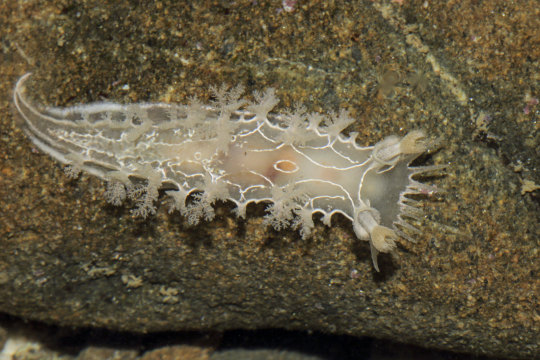#dendronotida
Photo

Diamondback nudibranch (Tritonia festiva)
Photo by Marlin Harms
#diamondback nudibranch#tritonia festiva#tritonia#tritoniidae#tritonioidea#dendronotida#cladobranchia#dexiarchia#nudibranchia#nudipleura#euthyneura#heterobranchia#gastropoda#mollusca#lophotrochozoa
34 notes
·
View notes
Photo



Phylliroe sp. (P. atlantica & P. bucephalum)
Taxonomy: Animalia, Mollusca, Gastropoda, Nudibranchia, Dendronotida, Tritonioidea, Phylliroidae, Phylliroe, Phylliroe sp.
Description: Phylliroe are laterally compressed nudibranchs, with prominent rhinophores and transparent bodies. They posess bioluminescent markings on their bodies. The lateral compression, whisker-like rhinophores and formation of a tail like structure gives these nudibranchs the appearance of a fish, which makes them iconic amongst other nudibranch species.
Lifestyle: Phylliroe live in the Atlantic, Pacific, and Medeterranean: P. atlantica in the first two and P. bucephalum in the latter. These nudibranchs live in deep water, hence the unusual presence of bioluminescence. Both species have a parasitic life cycle; the larval forms attach themselves to the bells of Zanclea costata with their foot, where they feed on the tissues of the bell. As the nudibranch reaches its maximum size of 550mm, the jellyfish shrinks in size, resulting in the adult nudibranch outgrowing the jellyfish after 10 days. Phylliroe then eats the tentacles of the host and departs to live independently. Much of the remaining life cycle of this genus is unknown.
Images from seaslugs, Fabien Michenet and sea slugs of Hawai’i
I love these nudibranchs so much! Not sure if they’re my favourite, but the degree to which they look unlike other nudibranchs is absolutely amazing.
499 notes
·
View notes